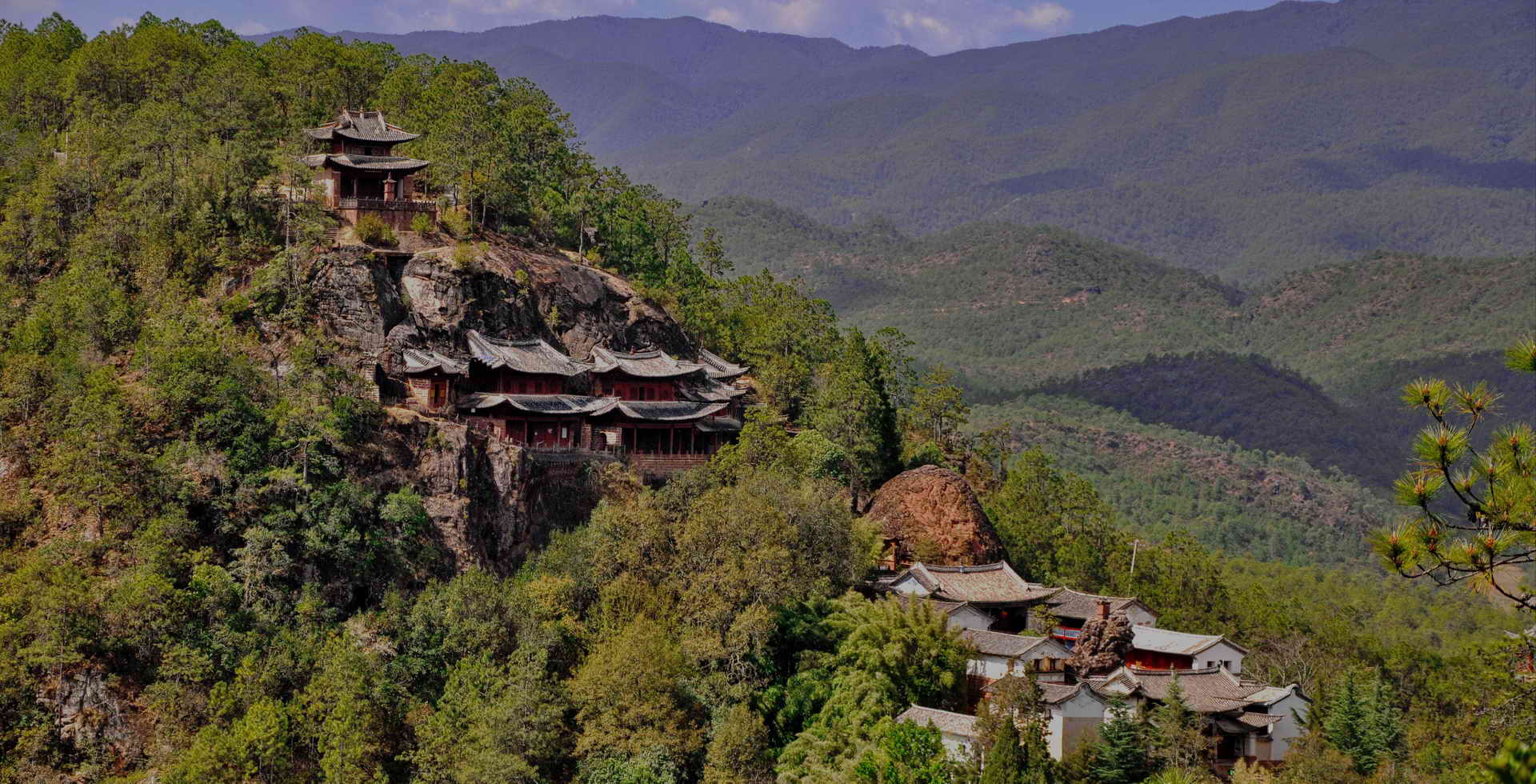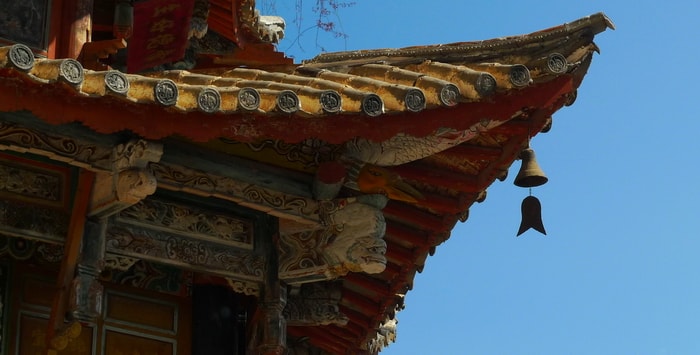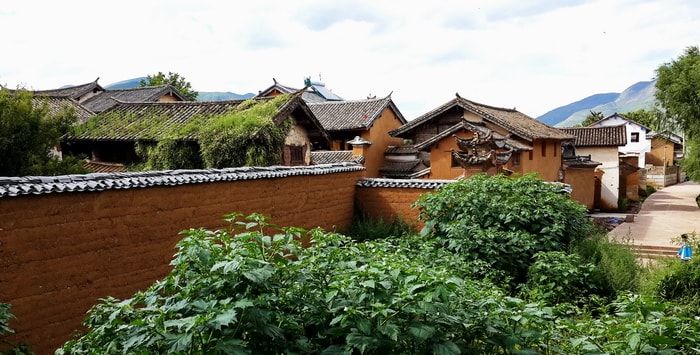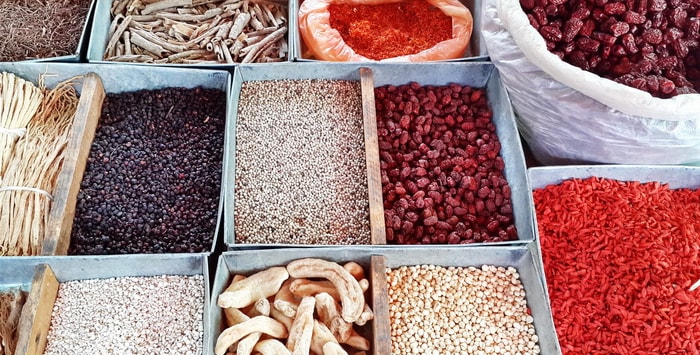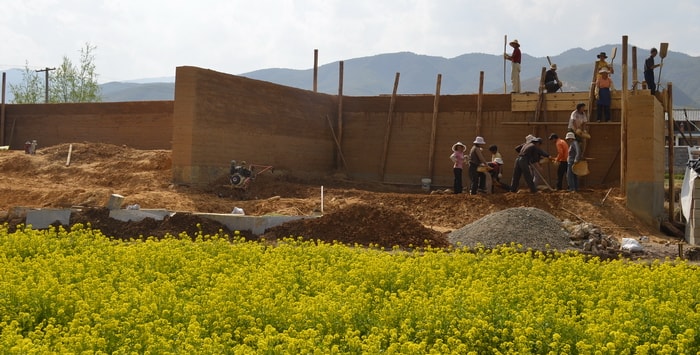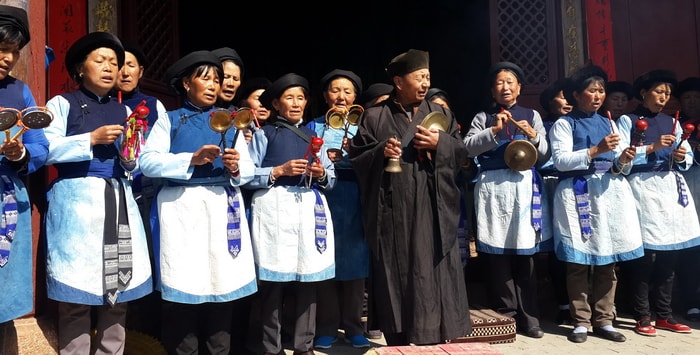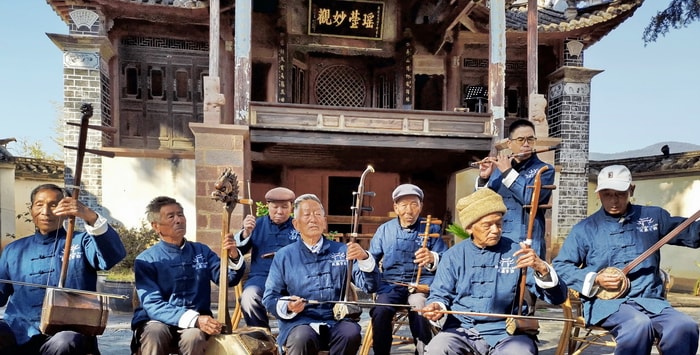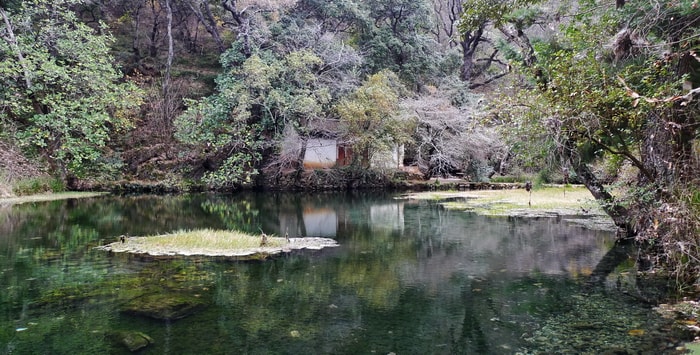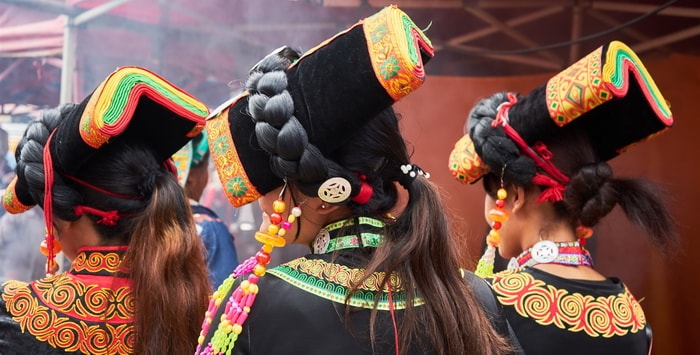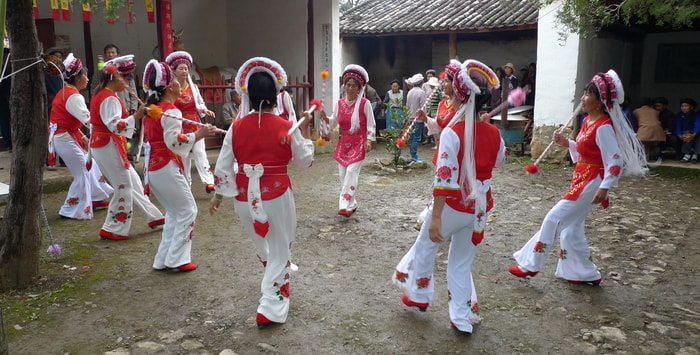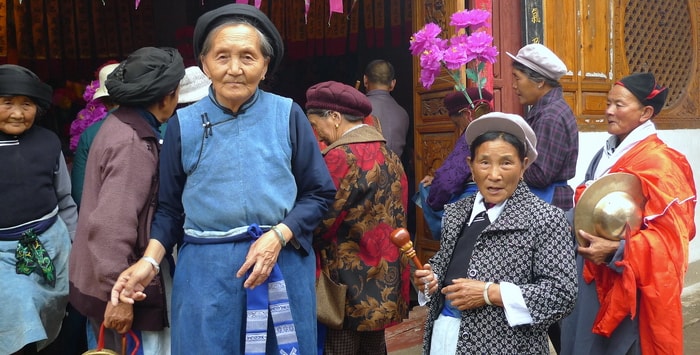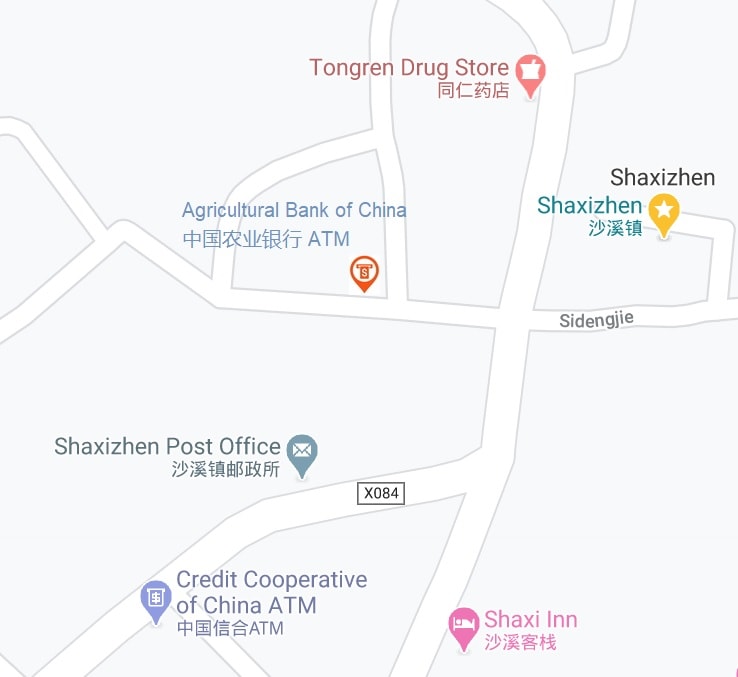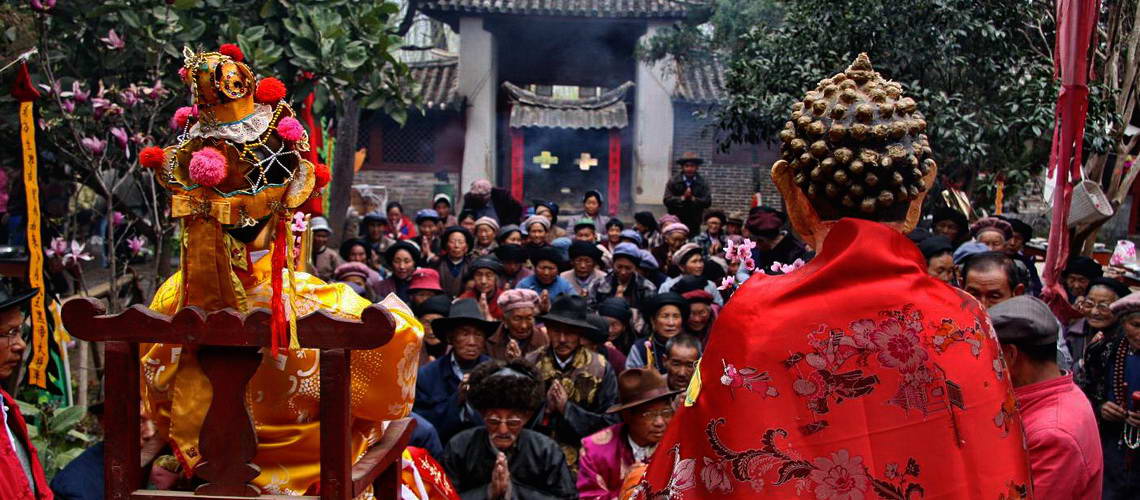
GESCHICHTE VON SHAXI
Alte Gräber und frühe Kupferminen zeigen deutlich, dass Shaxi bereits 400 v. Chr. eine Basis für das Schmelzen von Bronze war, die in China als Frühlings- und Herbstperiode und als Warring States-Periode (770 v. Chr. - 221 v. Chr.) bekannt war. Die südliche Seidenstraße, besser bekannt als Ancient Tea Horse Caravan Trail, war mindestens 300 Jahre älter als ihr berühmteres Gegenstück im Norden. Die ersten schriftlichen Aufzeichnungen der Route stammen aus der Tang-Dynastie (618-907), die in Yunnan als die Zeit des Königreichs Nanzhao (649-920) bekannt war, aber der Handel hatte lange vor dieser Zeit begonnen. Von den Hangplantagen von Simao und Xishuangbanna brachten die Maultiere Pu'er-Tee; Burmesische Händler, oft begleitet von indischen Mönchen, kauften Häute und Tierknochen zur Verwendung in der chinesischen Medizin. Salz, ein wesentliches Gut vor dem Aufkommen der Kühlung, kam aus Qiaohou südlich von Shaxi und von Yunlong über die Berge im Westen, zusammen mit Silber aus Mischa und dem nahe gelegenen Heqing. Neben Filz, Seide und Edelsteinen war das wertvollste Medikament, Opium, vielleicht Yunnans beste Einnahmequelle zu dieser Zeit. All dies und mehr wurde mit Tibetern gegen Gegenstände wie Moschus, seltene Pilze und exotische Medikamente eingetauscht, die in den kalten Bergen im Norden gefunden wurden.
Das Hauptdorf Sideng wurde zu einem wichtigen Stützpunkt für die Karawanen, und das gesamte Tal blühte in den Ming- und Qing-Dynastien auf. Der Marktplatz war im gesamten Südwesten berühmt und zog Händler aus einer Vielzahl von Kulturen an, die die Rentabilität der Tea Horse Road nur steigerten. Hani aus dem südlichen Yunnan brachte Tee und reichhaltige Tücher. Naxi aus Lijiang brachte Holz, die muslimischen Hui kauften Yakfelle und Pferde. Der Reichtum, der durch all diesen Handel erzeugt wird, zeigt sich deutlich in der kunstvollen lokalen Architektur mit ihren imposanten Tortürmen und geräumigen Innenhöfen. Im Zentrum all dessen steht das Theater der Qing-Dynastie direkt gegenüber dem 400 Jahre alten Tempel, das einer ebenso breiten Palette von Glaubensrichtungen gewidmet ist wie die Kaufleute und Pilger, die dieses abgelegene Dorf zu einem pulsierenden Handelszentrum gemacht haben, das bis jenseits des Endes der Qing-Dynastie (1614-1911) bestehen blieb. Die Karawanenrouten starben schließlich vor etwa 60 Jahren aus, als die neu gebildete Volksbefreiungsarmee ihren Vormarsch auf Westtibet begann und jedes Packtier beschlagnahmte, das sie finden konnten. Die jahrhundertealten Handelswege endeten 1950 abrupt, als das Verbot der Kommunisten auf privaten Märkten die letzten Nägel in den Sarg schlug. Die Einheimischen kehrten schnell zur Landwirtschaft zurück und verbrachten die letzten Jahrzehnte relativ isoliert. In jüngerer Zeit hat der World Monument Fund 2001 den Marktplatz von Shaxi in seine Beobachtungsliste der 100 am stärksten gefährdeten Gebiete aufgenommen. Zu diesem Zeitpunkt hatten Hausbesetzer einen Großteil des Dorfes übernommen, und viele der Gebäude waren bis zum Einsturz verfallen. Im Jahr 2002 haben die Eidgenössische Technische Hochschule Zürich (ETH) und die Volksregierung des Landkreises Jianchuan gemeinsam das Shaxi-Rehabilitationsprojekt (SRP) ins Leben gerufen, um das kulturelle und natürliche Erbe des Dorfes Sideng und des Shaxi-Tals zu schützen und wiederzubeleben. Mit 1,3 Mio. USD aus Mitteln des World Monument Fund stellten sie einen Schweizer Naturschutzexperten Jacques Feiner ein, der sich zuvor in der jemenitischen Altstadt Sanaa, einem der frühesten Bevölkerungszentren der Menschheitsgeschichte, einen Namen gemacht hatte. Sein Ansatz war es, wo immer möglich traditionelle Techniken und Materialien zu restaurieren und nicht wieder aufzubauen. Abgesehen von der Restaurierung des Tempels und der Bühne wurde der gesamte Marktplatz entwässert und neu verlegt, was zu einer Reihe bedeutender Auszeichnungen führte, darunter ein UNESCO-Preis für die Erhaltung des kulturellen Erbes.

